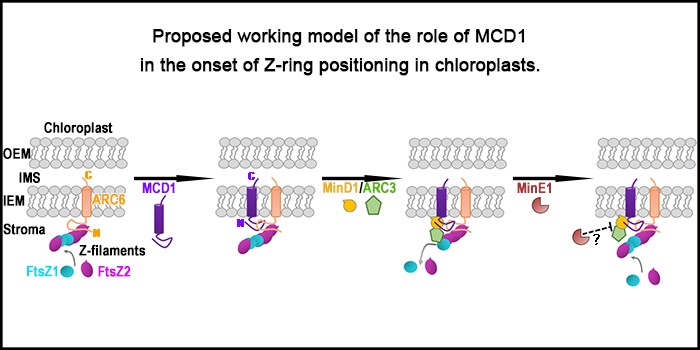
Role of MCD1 in Positioning the Chloroplast Division Site
Chen et al. investigate the mechanism of MCD1’s action in chloroplast Z-ring positioning in dividing chloroplasts. https://doi.org/10.1105/tpc.18.00189
Background: Chloroplasts are specialized photosynthetic organelles in plants that evolved from an ancient photosynthesizing cyanobacterium through…

A Force-Generating Machine in the Plant's Power House: A Pulling AAA ATPase Motor Drives Protein Translocation into Chloroplasts
Most chloroplast proteins are encoded by the nuclear genome and synthesized on cytosolic ribosomes. N-terminal transit peptides serve as targeting sequences to direct precursors of chloroplast proteins to receptors on the chloroplast surface. These receptors are part of the translocase of the outer envelope,…
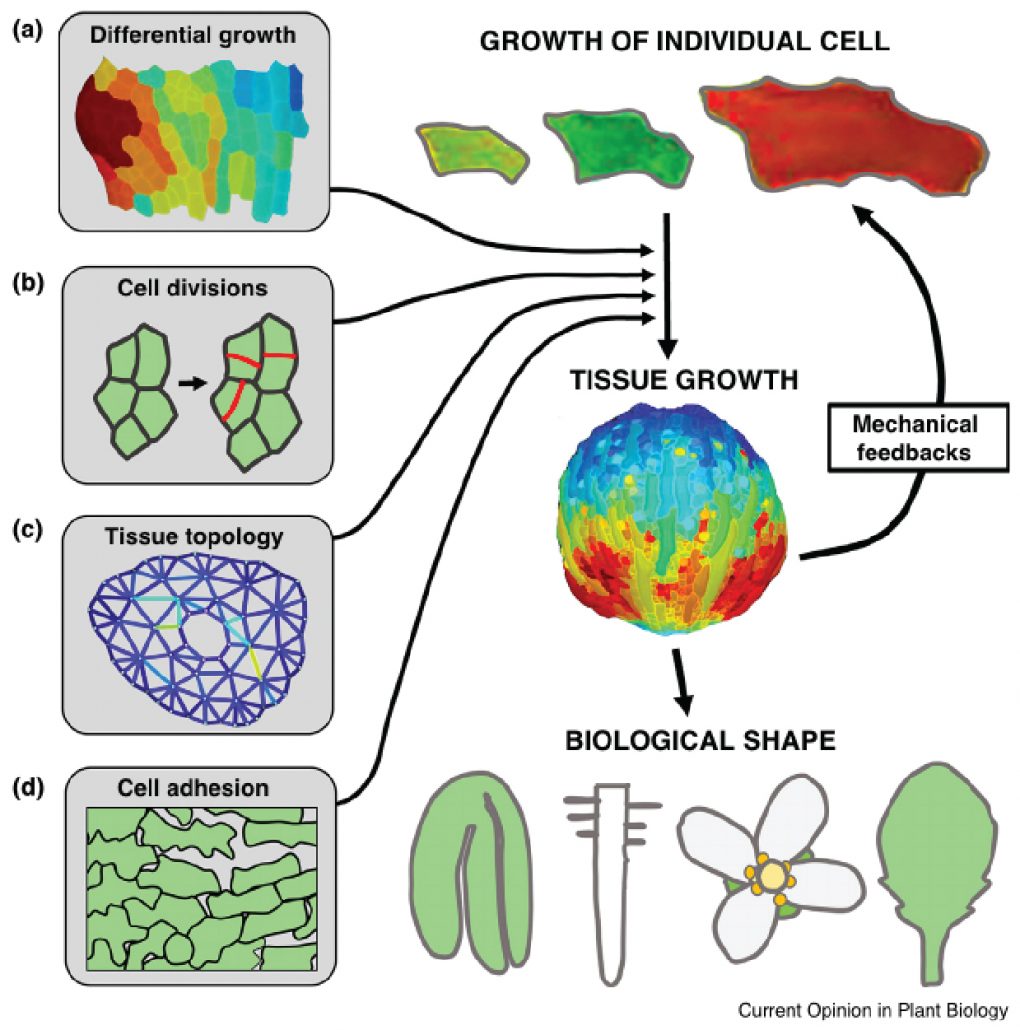
Review - Cellular basis of growth in plants: geometry matters (COPB - $)
Plants exhibit various forms which are determined by the individual cells. The diversity of cell shapes within a single organism is astounding and results from the interactions between the pressure generated by the cell and surrounding tissue as well as heterogeneities in the cell wall composition. As…
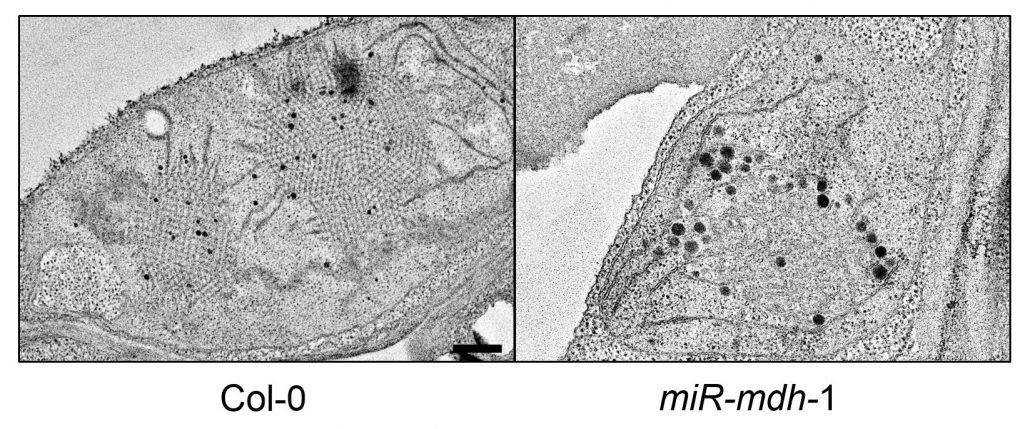
Moonlighting Role of Plastidial NAD-MDH
Schreier et al. investigate the role of a plastid malate dehydrogenase in early chloroplast development. Plant Cell 30: 1745-1769
Background: Malate dehydrogenases (MDH) are enzymes that are widespread in prokaryotes and eukaryotes. MDH interconverts oxaloacetate and malate, using either NAD or…
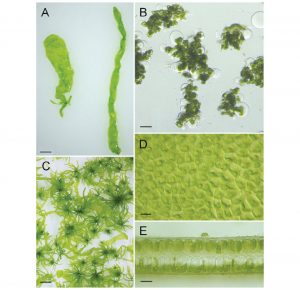
Insights into the evolution of multicellularity from the sea lettuce genome (Current Biol. - $)
The transition from unicellular to multicellular life forms occurred across multiple kingdoms, and in plants is correlated with the expansion of gene families involved in extracellular matrix formation and cell cycle regulation. Green seaweeds acquired their plant-like body independently of other lineages…

Review - A plane choice: coordinating timing and orientation of cell division during plant development (Current Opinion in Plant Bio)
Asymmetric cell division is instrumental to development of specialized cells, while symmetric cell division underlies proliferative growth. The defects in cell division plane arise when transition between the G1 to S stage is accelerated, suggesting that the signals leading to division plane position…
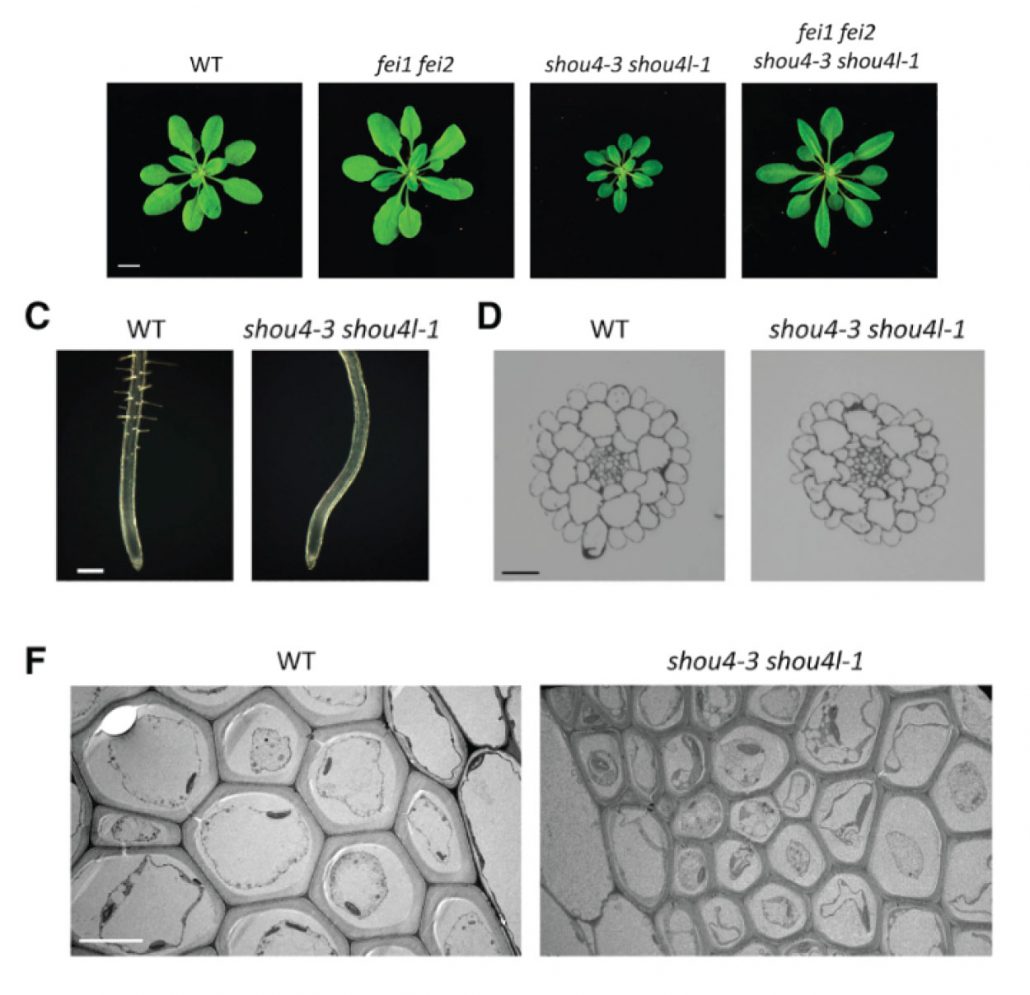
SHOU4 proteins regulate trafficking of cellulose synthase complexes to the plasma membrane (Curr. Biol.)
Plant cell walls provide mechanical support and define the extent and direction of cell expansion. Regulation of cellulose synthase determines cell wall load bearing and involves the receptor like kinases FEI1/FEI2. To gain further understanding of cell wall integrity regulation Polko et al. performed…
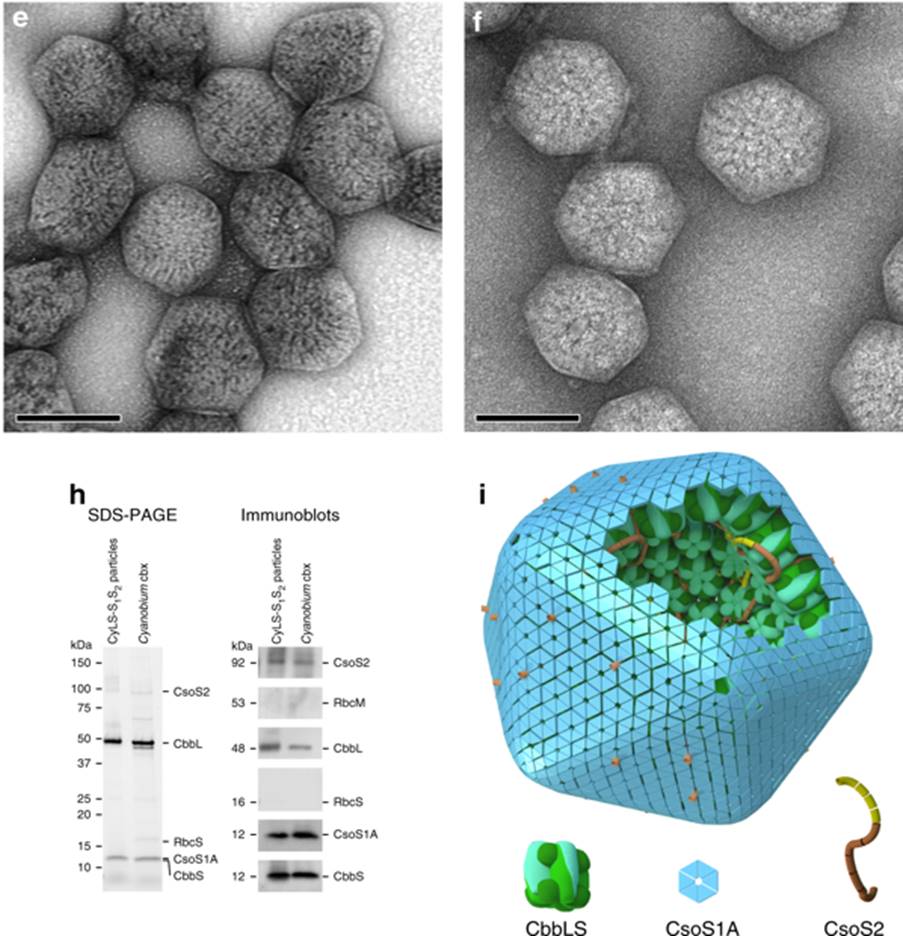
Carboxysome encapsulation of the CO2-fixing enzyme Rubisco in tobacco chloroplasts (Nature Comms.)
One of the fundamental challenges facing terrestrial plants occurs when CO2 levels are depleted at Rubisco, causing its inefficient oxygenase activity to dominate. Some plants minimize this problem by adding a carbon-fixing step upstream of Rubisco, and various algae and cyanobacteria sequester Rubisco…
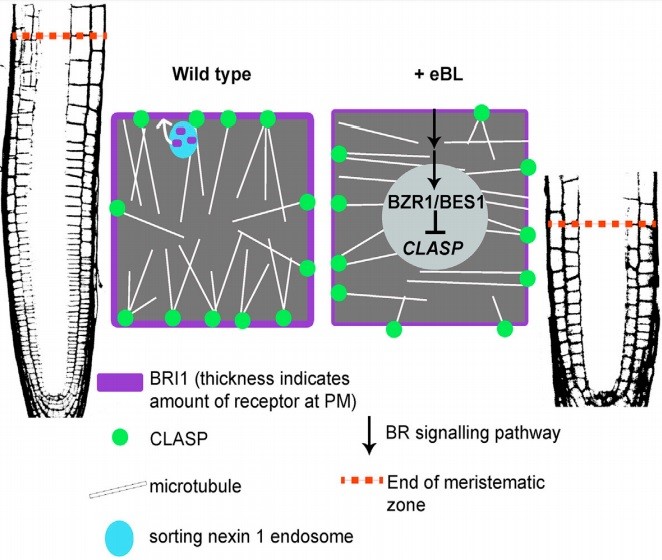
CLASP sustains cell proliferation through a brassinosteroid signaling negative feedback loop ($) (Curr. Biol.)
Brassinostreroid (BR) regulates the development of the root apical meristem. High levels of BR have inhibitory effects on cell production rates in the meristem and low levels show the opposite effect. Ruan, Halat et al. showed that BR regulates microtubule-associated CLASP (CLIP-Associated Protein) expression…

